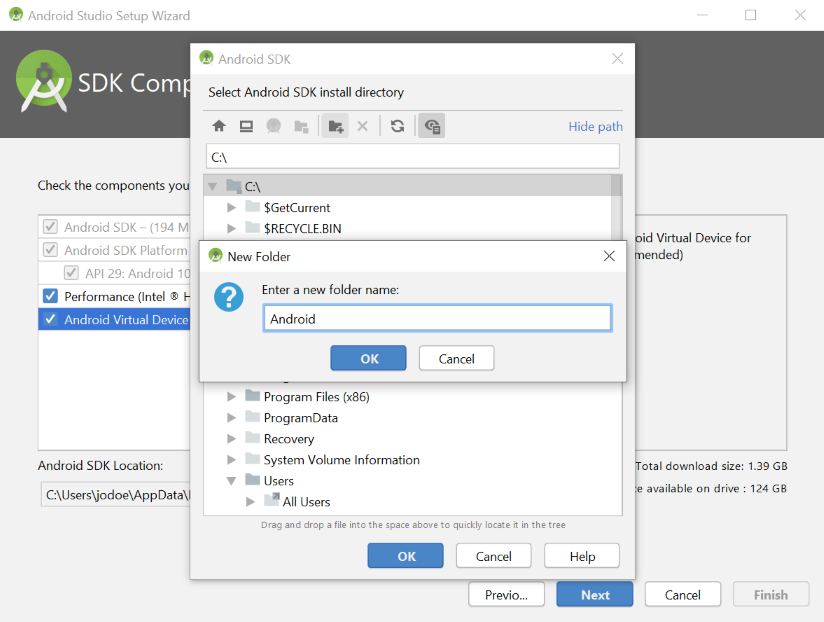
When you open the AVD manager, look at the bottom left corner and you’ll see a button for creating a new virtual device.Įach virtual device comprises some hardware and software configurations. However, you can download the device of your choice that has a different screen size or other specifications to test your application for your specific purpose or on a larger scale. There’ll be a default virtual device in your AVD manager when you download the Android emulator. Now, select Tools > AVD Manager (for Android Virtual Device), and explore the virtual devices. Wait for the installations to complete, and then restart your computer and Android Studio. If you install HAXM with Hyper-V already working on your computer, it is bound to cause problems. HAXM is downloaded and installed through the same window you used to download the Android emulator. HAXM is another hardware acceleration tool. If Hyper-V is not installed on your computer, then Android Studio allows you to install HAXM through its SDK manager. You can discover Hyper-V’s status on your computer by running the systeminfo.exe command in your command prompt. Fortunately, Windows 10 comes preloaded with Hyper-V, which is one of the best virtualization tools in the market. Click Apply, and Android Studio will download the emulator for you.Īn Android emulator cannot run on your computer without a virtualization tool for hardware acceleration. Then, from the settings window, choose Android Emulator. You can download it from the SDK manager located in the tools. To use the Android Emulator, you will need to download it first. Continue reading to learn how to set up an Android emulator, create a virtual device, and run your application on it. It can be tricky to set up Android Emulator, but this tutorial is here to your rescue. So, to check out how your changes are performing on the screen, Android Studio allows you to test your app on the go with its built-in Android Emulator.

Generating a new APK file after every new addition to your application would be way too tedious. For example, if your application is not yet complete but you are trying some new font styles, you want to see how they look. However, you would ideally want to see how your application is performing on a phone’s screen as you make small changes. To test and debug it, you can generate a testing APK file using Android Studio and then install it on your Android device.

Let’s say that you are developing an application. You can test your Android application with Android Studio in a few ways.


 0 kommentar(er)
0 kommentar(er)
